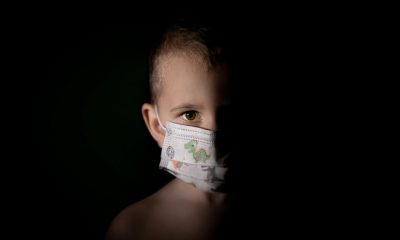By Stephen Beech via SWNS
Killer whale calves are real mommy's boys as raising sons is so exhausting for them they often can't nurture any more offspring, reveals a new study.
Researchers found that each living son cut a mother’s annual likelihood of having a calf that survives for at least a year by around 50 percent.
And the effect continued as sons grew older – suggesting they're a lifelong burden on their mothers.
The practice previously benefited the whales, but now researchers say such extended nurturing of sons into adulthood threatens the very existence of the "critically endangered" species.
It was previously known that killer whale moms provide more support to sons than daughters, especially after daughters reach adulthood.
But the new study, conducted by researchers from the universities of Exeter, York and Cambridge along with the Center for Whale Research, shows that such support comes at a huge cost to the mothers.
Dr. Michael Weiss, of the University of Exeter, said: “The magnitude of the cost that females take on to care for their weaned sons was really surprising.
“While there’s some uncertainty, our best estimate is that each additional surviving son cuts a female’s chances of having a new calf in a given year by more than 50 percent. This is a huge cost to taking care of sons.”
Weiss says the findings, published in the journal Current Biology, suggest that there are significant benefits to keeping adult sons alive and well.
via GIPHY
He said: “Females gain evolutionary benefits when their sons are able to successfully reproduce, and our results indicate that these benefits are enough to outweigh a large direct cost."
The research team used data from 1982 to 2021 on 40 females in the “southern resident” killer whale population, living off the Pacific coast of North America.
The whales feed predominantly on salmon with mothers often biting the salmon in two, eating half and giving half to their sons.
The moms also feed their young daughters, but once the daughters reach reproductive age the practice tends to stop – whereas they continue to feed their sons into adulthood.
Researchers say that mothers indefinitely sacrificing their future reproduction to keep their sons alive is highly unusual in nature and may even be unique.
Darren Croft, a professor of Animal Behaviour at Exeter University, explained that mothers gain an “indirect fitness” benefit: helping their sons survive and reproduce improves the chances of their genes passing to future generations.
He says that mothers focusing on their sons would be beneficial because the sons could mate with numerous females, producing a large number of grand offspring.
However, Croft warned that the long-term strategy may now cause problems for the future viability of the population.
Southern resident killer whales specialize in eating Chinook salmon which have become scarce in many parts of the whales’ range. With their food limited, the southern residents are also endangered.
Just 73 southern resident killer whales remain and – as they don’t inter-breed with other killer whale populations – this number is "critically" low.
Croft said: “For this population that’s living on a knife’s edge, the potential for population recovery is going to be limited by the number of females and those females' reproductive output.
“A strategy of females reducing reproduction to increase the survival of male offspring may therefore have negative impacts on this population’s recovery.”
Professor Dan Franks, of York University, said: "This strategy of indefinitely sacrificing future reproduction to keep their sons alive may have been beneficial in their evolutionary past, but it now potentially threatens the future viability of the southern resident killer whale population, which is critically endangered with just 73 individuals remaining."
Weiss said: “We’ve known for over a decade that adult male killer whales relied on their mothers to keep them alive, but it had never been clear whether mothers pay a cost to do so.
"Our previous research has shown that sons have a higher chance of survival if their mother is around.
“In this study, we wanted to find out if this help comes at a price.
“The answer is yes – killer whale mothers pay a high cost in terms of their future reproduction to keep their sons alive.”
Weiss added: “One big take-away is further evidence for how special - and maybe unique - the mother-son bond in killer whales is.
“Maybe more importantly, our study adds to the growing body of work showing the importance of animals’ social systems in determining demographic patterns.
"This is of central importance both for an understanding of our world, and to effectively conserve endangered species.”
He said the research team suspect mothers may not eat enough themselves as they continue sharing food with their full-grown sons.
Weiss noted that the southern resident killer whales are “very food-stressed" so a primary conservation goal for the whales is to recover the population of Chinook salmon they rely on.

 Parenting5 days ago
Parenting5 days ago
 Lifestyle4 days ago
Lifestyle4 days ago
 Broadcast1 week ago
Broadcast1 week ago
 Broadcast6 days ago
Broadcast6 days ago
 Money7 days ago
Money7 days ago
 Pets1 week ago
Pets1 week ago
 Environment6 days ago
Environment6 days ago
 Health1 week ago
Health1 week ago




















